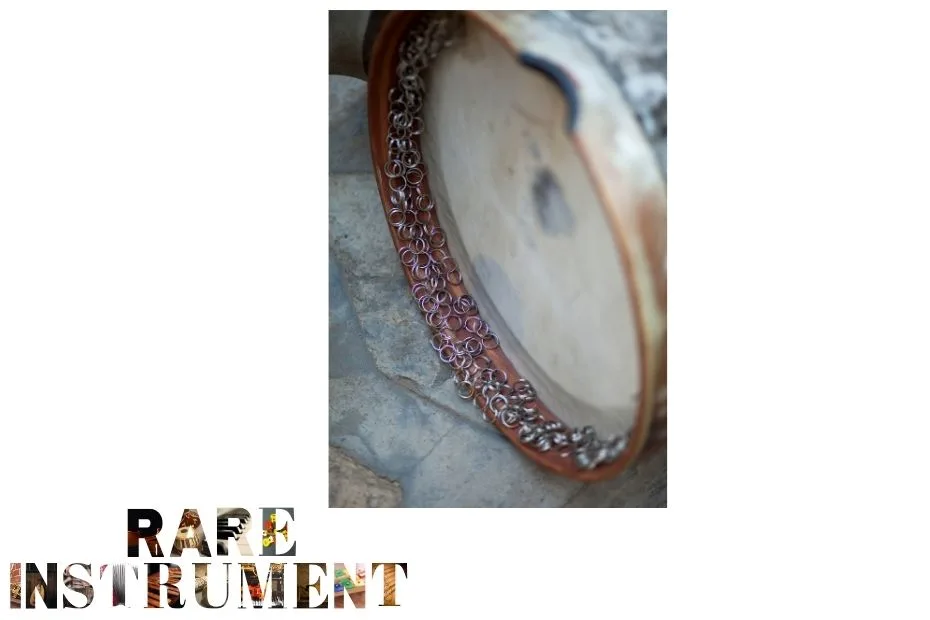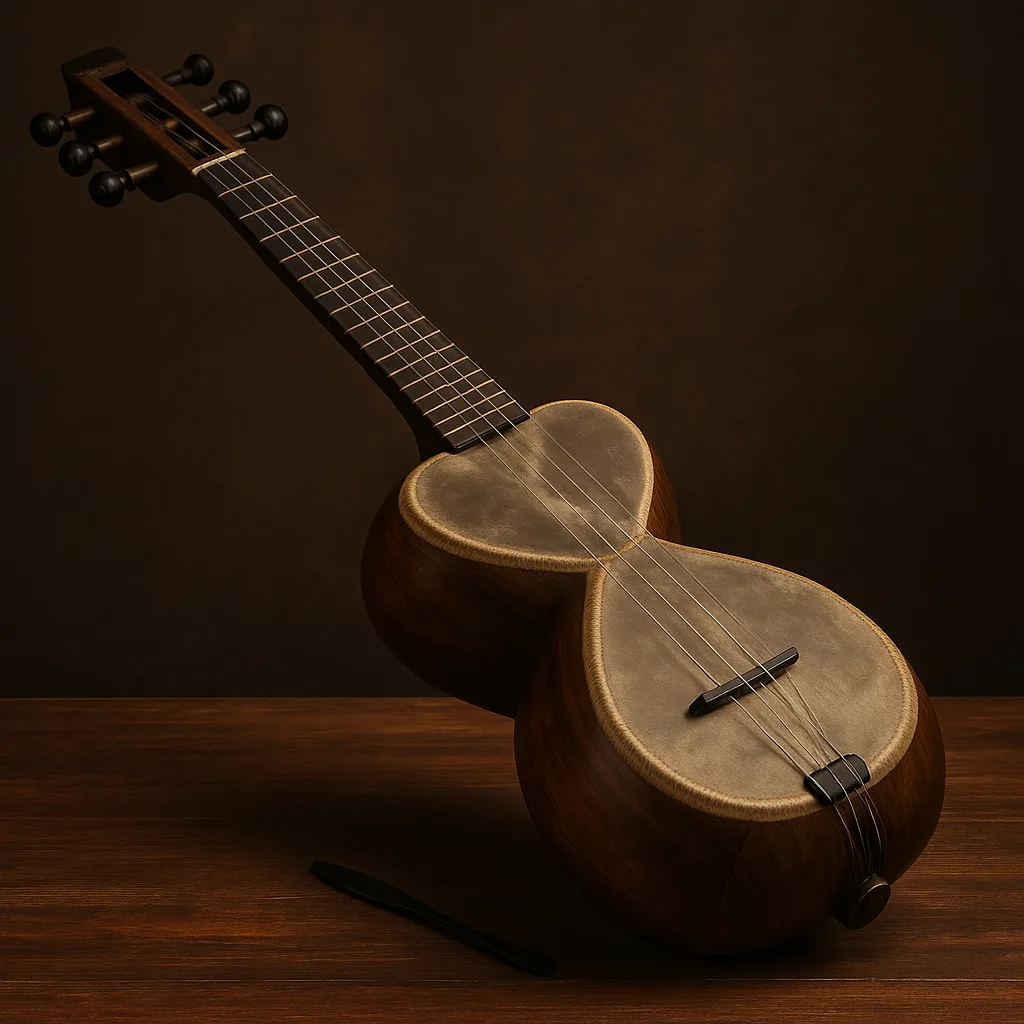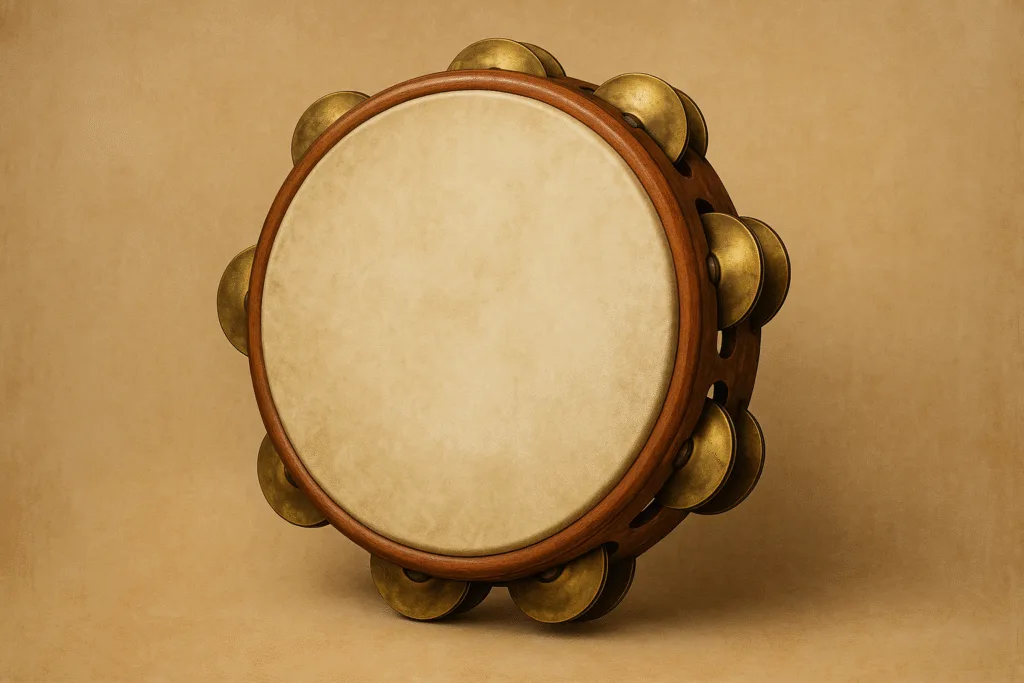The Bendir: A Resonant Voice of North African and Middle Eastern Music
Key Features of the Bendir
| Feature | Details |
|---|---|
| Origin | North Africa (Morocco, Algeria, Tunisia) and Middle East |
| Type | Large frame drum with internal snare strings |
| Size | 30–50 cm in diameter, 10 cm depth |
| Materials | Wooden frame, goat/calf skin head, gut or nylon snares |
| Distinctive Feature | Buzzing timbre from internal snares |
Historical Roots and Cultural Identity
The bendir is a staple of North African music, found across Morocco, Algeria, and Tunisia, and extending into the Middle East. Its lineage stretches back to ancient frame drums depicted in Egyptian tomb paintings and Berber cultural rituals. Unlike simple frame drums, the bendir is distinguished by gut or nylon snares stretched across its head, producing a deep, buzzing resonance.
Culturally, the bendir is central to Gnawa ceremonies, Sufi dhikr rituals, and folk celebrations. It is more than percussion; it is a spiritual tool and a communal voice. In many Berber traditions, the bendir accompanies storytelling and dance, representing resilience and cultural memory.
UNESCO has highlighted the Gnawa rituals of Morocco and other North African music traditions as part of humanity’s intangible heritage, where the bendir plays a vital role in transmitting collective identity and healing practices.
Construction and Acoustic Design
The Frame and Head
The bendir typically has a large, shallow frame made of hardwood or light composite, allowing for portability yet durability. The head is traditionally goat or calf skin, stretched tightly over the frame. Skilled makers adjust thickness and tension to balance warmth with projection. Synthetic heads are also used today, especially in humid climates.
The Snare System
Its defining feature is the snare strings attached behind the head. These snares vibrate sympathetically, producing a distinct buzzing timbre that cuts through ensembles. This design makes the bendir sonically unique compared to other frame drums such as the daf or tar.
Core Techniques and Performance Practice
Playing the bendir requires both strength and subtlety. It is usually held vertically, with the thumbs inside the frame. Common techniques include:
- Dum: The deep bass tone struck in the center.
- Tak: High-pitched strokes on the rim with fingertips.
- Buzz stroke: Exploiting the snares for a rattling effect.
- Rolls: Finger trills across the head, producing continuous sound.
- Snap: Using the thumb for sharp accents.
Terminology such as iqa‘at (rhythmic cycles) is borrowed from Arabic theory, though Berber traditions have their own local rhythmic classifications. The bendir’s versatility allows it to anchor both trance-based rituals and complex ensemble arrangements.
The Bendir in Musical Contexts
Traditional Ensembles
In Morocco, the bendir is integral to Gnawa lila ceremonies, where it drives trance rhythms alongside the guembri. In Algeria and Tunisia, it appears in chaabi and folk ensembles, often leading celebratory dances. Its buzzing tone is ideal for outdoor performances, where volume and resonance are essential.
Modern Adaptations
Contemporary musicians have incorporated the bendir into fusion, jazz, and world music. Percussionists use it in experimental projects for its earthy timbre. International orchestras sometimes feature it in cross-cultural works, presenting the bendir not only as folk heritage but as a versatile modern instrument.
Learning and Practical Guidance
Beginners often start with mastering dum and tak, before progressing to full rhythmic cycles. Teachers emphasize hand stamina and grip, as the large size can challenge newcomers. Many conservatories in North Africa and Europe now include bendir in their percussion programs, while online tutorials expand access globally.
Practical advice for learners includes experimenting with head tension and practicing with different fingerings to control the buzz. A common tip is to keep the drum angled slightly to balance skin tension and snare response.
Notable Masters and Performers
The bendir’s reputation owes much to legendary players. Moroccan Gnawa maalems such as Hamid El Kasri have showcased its trance-inducing power. Algerian artists have integrated the bendir into chaabi orchestras, while Tunisian ensembles use it in both folk and sacred contexts. In contemporary music, international percussionists like Trilok Gurtu and Glen Velez have highlighted the bendir in global fusion performances.
Maintenance and Care
Because the bendir relies on natural skin, climate is critical. Keep it in 40–55% humidity. Too much dryness can cause cracking, while excess humidity loosens the head. Musicians often warm the skin gently with sunlight or a lamp before playing to tighten the tone. Synthetic-headed models reduce risk but sacrifice some warmth. The snares should be checked regularly to ensure proper buzzing tension.
Buying Tips
- Check the skin quality: even, smooth, no wrinkles or thin patches.
- Test the snare response: it should buzz clearly without overpowering the fundamental tone.
- Balance size and playability: larger bendirs project more, but smaller ones suit beginners.
- Consult teachers or experienced players to choose between traditional and modern builds.
Listen to the Bendir
For a vivid sense of the bendir’s sound, watch this performance by a Moroccan ensemble:
https://www.youtube.com/watch?v=Md3HUxLCf1Y
Global Resonance
From desert ceremonies to concert halls, the bendir carries the voice of centuries. Its deep tones and buzzing snares connect players to ancestral rhythms while adapting to modern creativity. Whether leading trance rituals in Marrakesh or appearing in jazz festivals in Europe, the bendir remains one of the most distinctive frame drums in the world.
References



